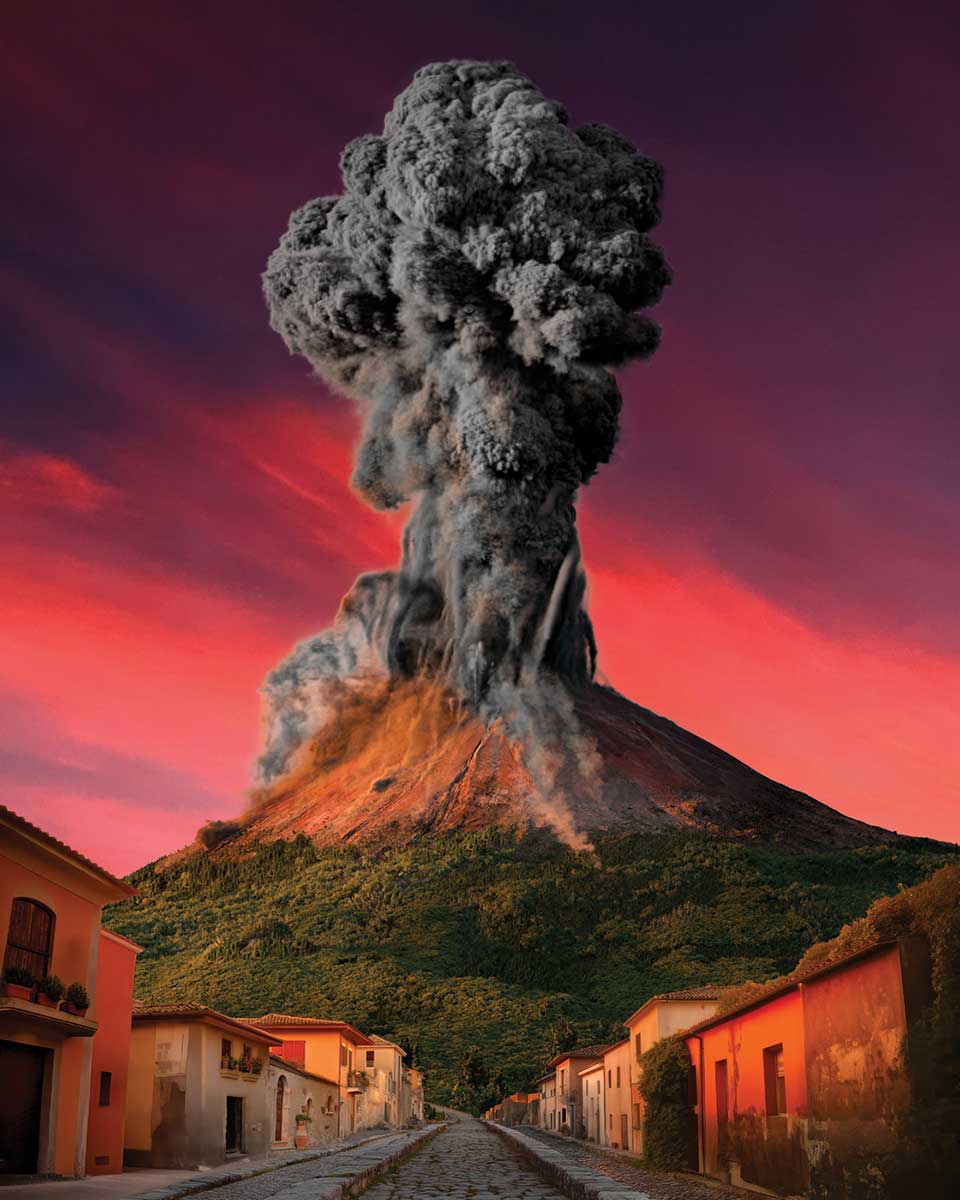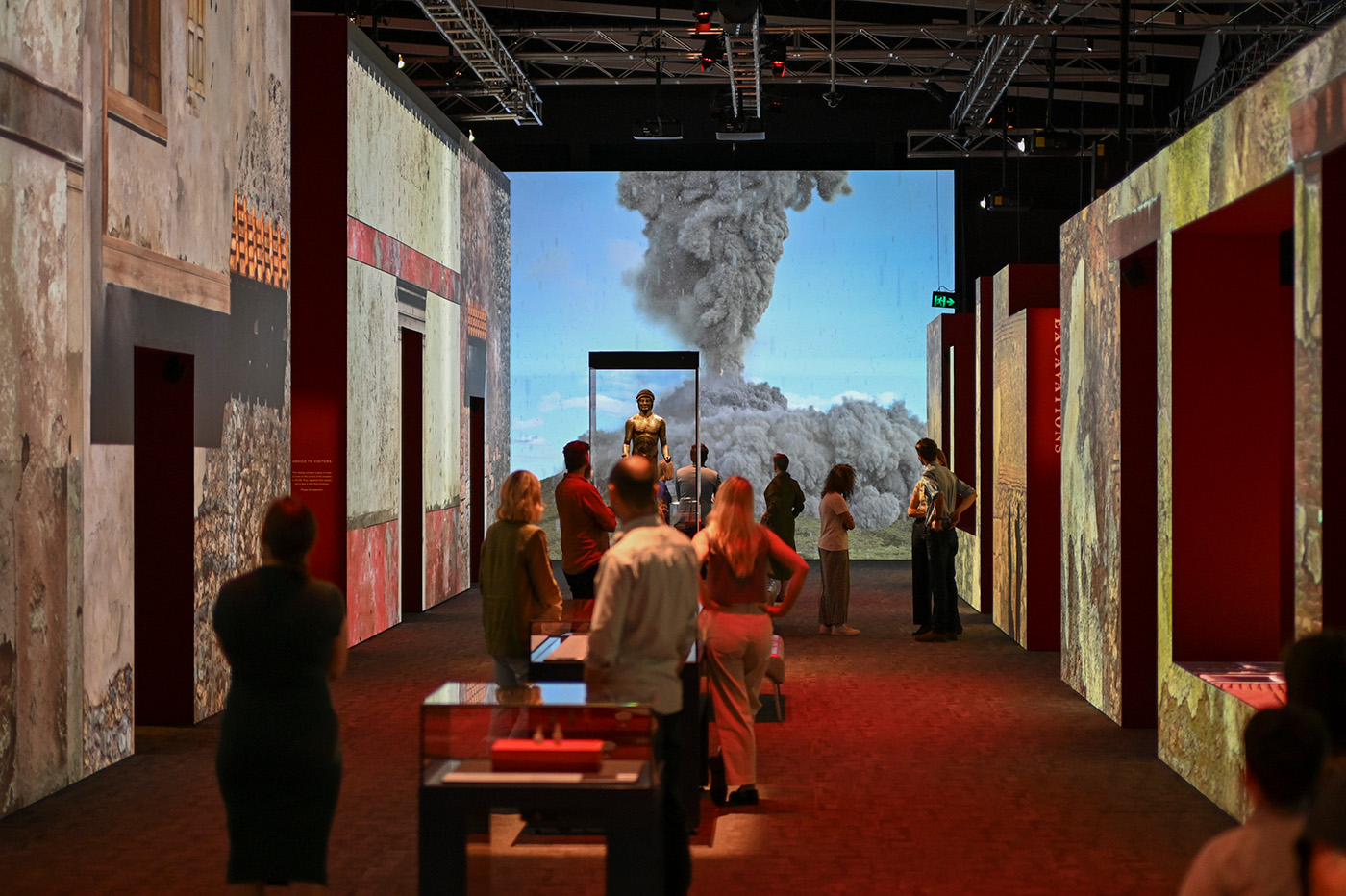
Visitors stepped inside Pompeii and discovered life in the ancient city before the fateful eruption of Mount Vesuvius almost 2,000 years ago.
Pompeii was on show at the National Museum of Australia in Canberra from 13 December 2024 to 4 May 2025.
Pompeii was an extraordinary multi-sensory immersive experience that combined a spectacular 360-degree recreation of the volcanic eruption with more than 90 objects from the ancient city.
The exhibition included recent archaeological discoveries, some which had not been seen outside Europe.
Visitors saw stunning frescoes, jewellery, sculptures, pottery and other intriguing objects representing everyday life.
Hear our Spotlight Conversation on Pompeii on ABC Radio National's Big Ideas.
Pompeii partners
Pompeii was an exclusive collaboration with the Parco Archeologico di Pompei in Italy, the Grand Palais and GEDEON Experiences in France and the National Museum of Australia.
The original Pompeii Immersive was produced by Réunion des Musées Nationaux – Grand Palais and GEDEON Experiences with the collaboration of the Parco Archeologico di Pompei.
In partnership with the ACT History Teachers Association, the National Museum of Australia invited teachers to a Pompeii panel discussion and exhibition preview in February 2025.
Teachers discovered more about the exciting work of archaeologists and curators who preserve and interpret the archaeological evidence from Pompeii, as well as practical strategies for engaging students with the history of this ancient city in meaningful ways.
A digital version of this professional learning opportunity will be available later in 2025.
Sign up to our Teacher eNews to receive further information and access to the digital version of the Pompeii program.
You may also like
